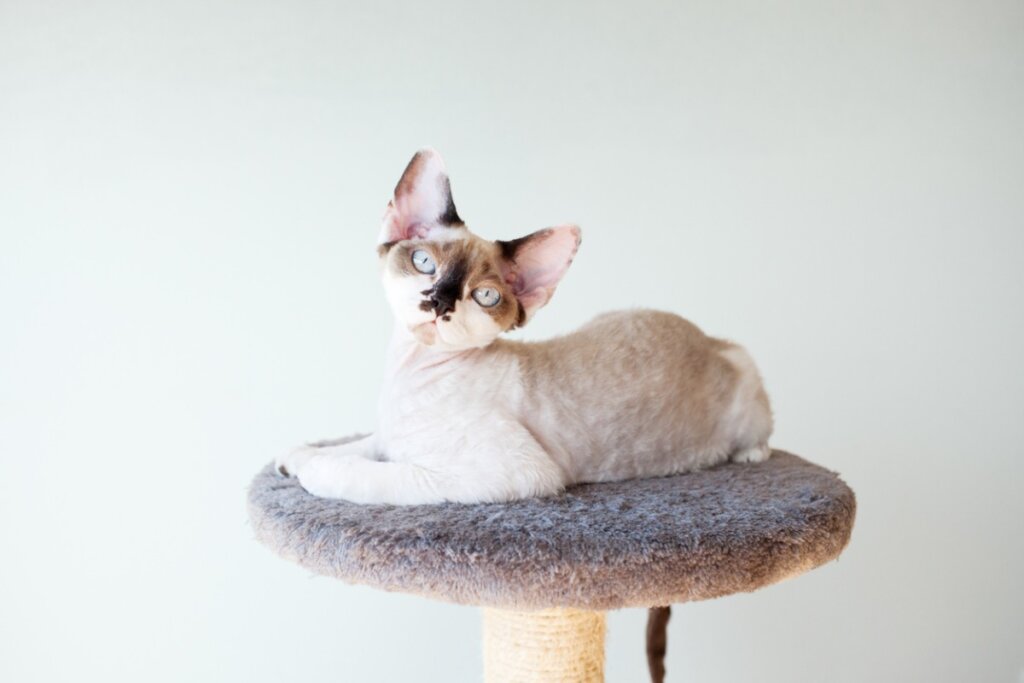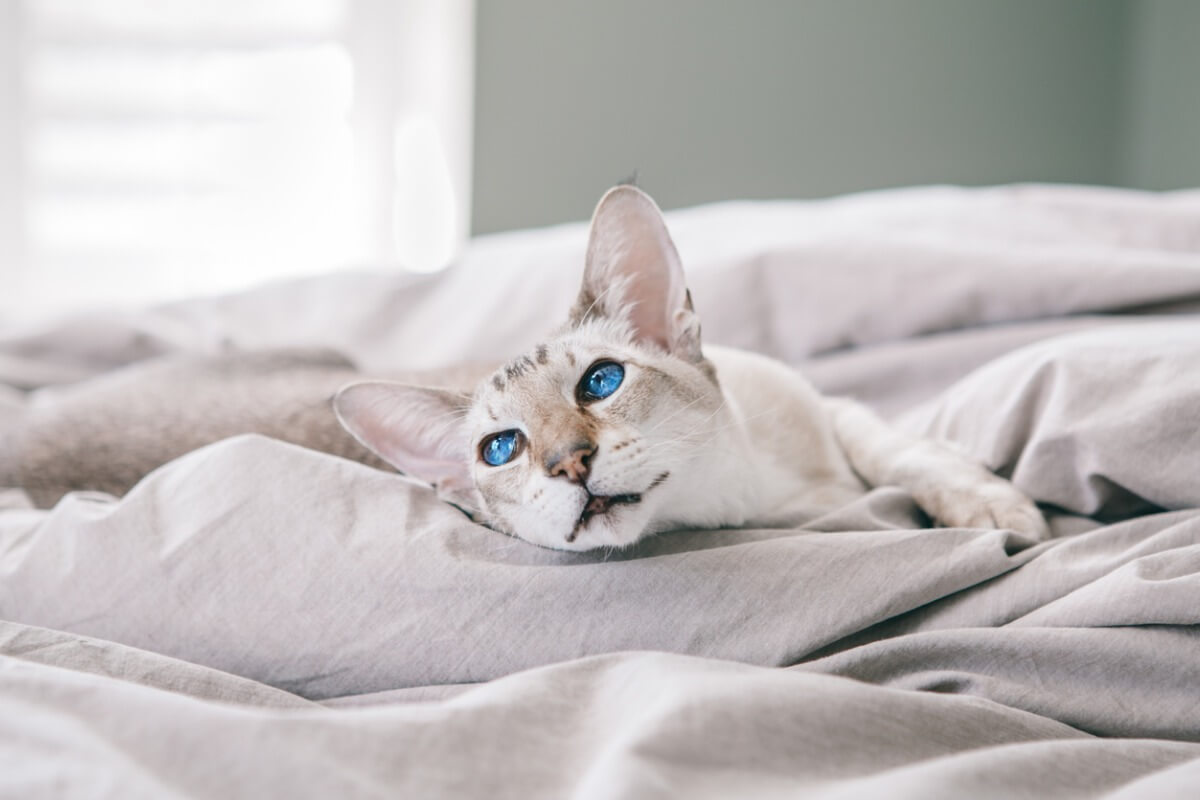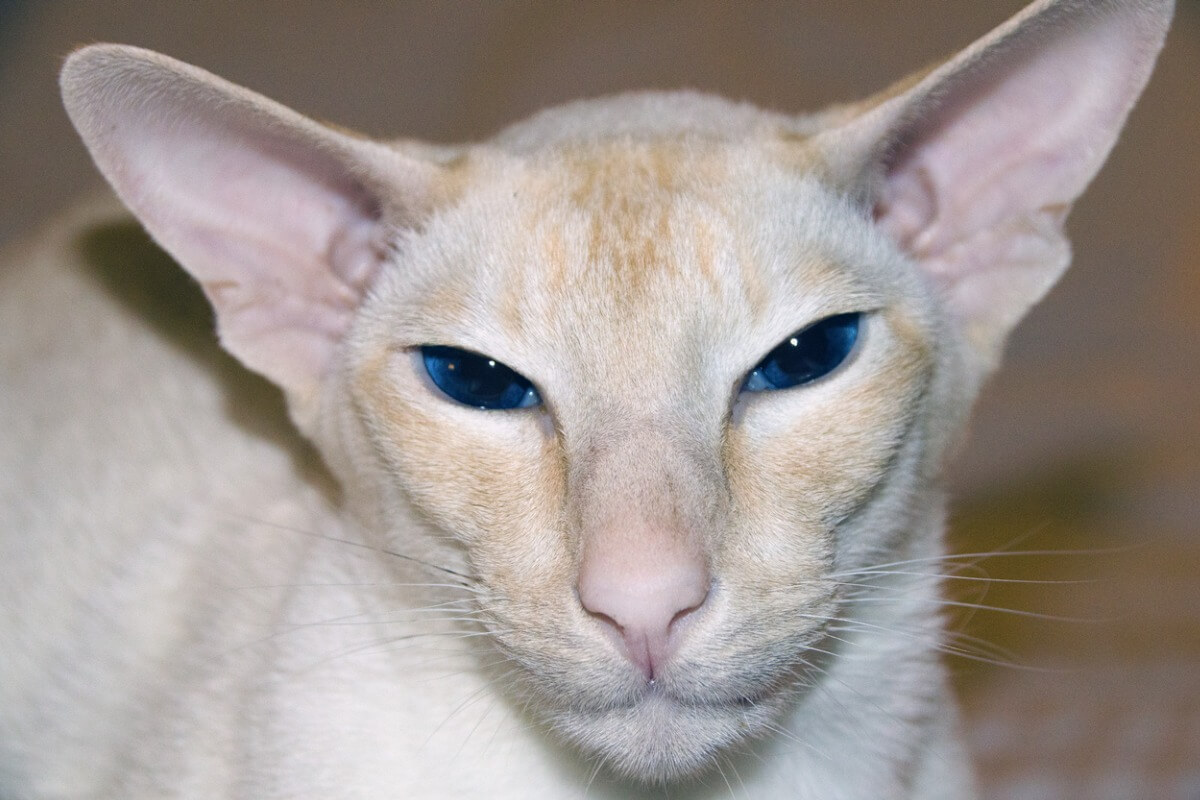Colorpoint Shorthair Cat: All About this Breed

Although physically very similar to the Siamese, the Colorpoint Shorthair cat is a descendant of the Siamese crossed with short-haired breeds. It has inherited a good character and some good physical traits from its parent breeds. However, its health is often a little fragile and it requires a lot of attention from its owner.
Its high life expectancy of 8 to 10 years, the different colors in his coat, its friendly and affectionate character, and its great intelligence are just some of the distinctive aspects of the Colorpoint Shorthair. Keep reading to find out more about this feline breed.
Origin of the Colorpoint Shorthair
This breed arises thanks to the crossing of the Siamese cat with short-haired breeds, such as the American Shorthair, the British Shorthair, or the Abyssinian. They are very similar to the Siamese cat, but their main difference is in the unique colors that the Colorpoint has in its coat. Some of the shades evident in the Colorpoint Shorthair breed are tortoiseshell, red, tabby, or cream.
The appearance of this breed dates back to 1940, the year in which Siamese breeders in the United States and England tried to get similar cats with different colors to those common in this breed. Among them are the Lilac Point, the Chocolate Point, the Blue Point Siamese cat, and or the Seal Point Siamese cat.
Officially, this breed was recognized as independent in 1974 by the International Cat Association. However, the International Cat Breeders Association (AFCA) and the International Feline Association (TICA) consider the Colorpoint Shorthair cat as a type of Siamese.

Physical characteristics
One of the main aspects of the Colorpoint Shorthair cat (and one of its major similarities with the Siamese cat) is, as you can tell from its name, its short hair. This is usually shiny, close to the body, and with colorpoint coloration on the tail, the tips of the ears, or the distal part of its legs.
As mentioned above, this cat appears in different colors and patterns. Sometimes they can be combined or not, but the coloration pattern is always maintained in the parts already indicated. The shades can be lynx, lilac, or tortoiseshell.
This breed has a wedge-shaped head, which is somewhat narrow and of medium size. Its skull is flat, its muzzle is thin and its nose is straight and stretched. Similarly, it has a pair of large deep blue eyes.
The tail is usually long and ends in a tip, a feature that is complemented by its slender, long legs. The size of its slender body and the weight of 5 to 6 kilos (11 to 13 pounds) are aspects that it shares with the Siamese cat.
The character of the Colorpoint Shorthair
Although they have a similar personality to the Siamese, the Colorpoint Shorthair is distinguished by being a very playful, intelligent, curious, and sociable breed with those around them. It’s also characterized by frequent meowing, for being loving, and, above all, for how it continuously seeks its owner’s attention.
The Colorpoint Shorthair cat is an easy breed to train through play and clear commands, thanks to its high capacity of reception and learning.
These kittens usually greet strangers with meows that are frequently emitted in almost 100 different vocal tones. These lovely cats are attentive to the mood changes of their owners and offer their support when they feel emotions such as sadness in them.
Care tips to consider
One of the important aspects to maintain the well-being of the Colorpoint Shorthair is that it needs frequent attention from its owners. Games, cuddles, and daily care are essential in order to keep this cat in good spirits, as it can easily decline in health if not given playtime and the necessary care.
Despite being a short-haired breed, it requires 2 or 3 weekly brushings, especially during the molting season that takes place between spring and autumn. Likewise, frequent brushing prevents hairballs from forming in its coat and then the cat ingesting them during grooming.
This breed has very sensitive skin, and it isn’t advisable to subject it to regular baths. Humidity and extreme temperatures can greatly affect their skin.
Colorpoint Shorthairs are very playful animals that must have a large area with places to climb and scratch, as well as toys to amuse themselves when they’ve been left alone. Through play, this breed is less likely to become overweight.
An important aspect to consider is the hygiene of this breed, which requires a daily cleaning of its sandbox and a weekly cleaning of their eyes, teeth, and ears. If you notice early possible changes in the animal’s health, then go to the vet to let them carry out a professional diagnosis.
Colorpoint Shorthair health
As indicated above, the Colorpoint Shorthair cat has a life expectancy of 8 to 12 years in which they don’t usually show any signs of disease. However, this breed has a certain tendency to express pathologies of a genetic nature, like the Siamese cat.
Some of these diseases are strabismus, deafness, nystagmus, asthma, and cardiac or behavioral problems. Consequently, it’s recommended that you go at least once a year to the vet to have a checkup.
Like all genetically selected breeds, the Colorpoint Shorthair is somewhat more prone to illness than other less “pure” felines.

As you can appreciate, the Colorpoint Shorthair cat has much in common with the Siamese. However, the behavior, coat colors, and character vary in both breeds. It’s an ideal companion for those who want to live long-term with a loving, intelligent, and playful feline.
All cited sources were thoroughly reviewed by our team to ensure their quality, reliability, currency, and validity. The bibliography of this article was considered reliable and of academic or scientific accuracy.
- The Cat Fancier’s Association. Colorpoint Shorthair. Recogido el 8 de diciembre de 2021 de: https://cfa.org/colorpoint-shorthair/